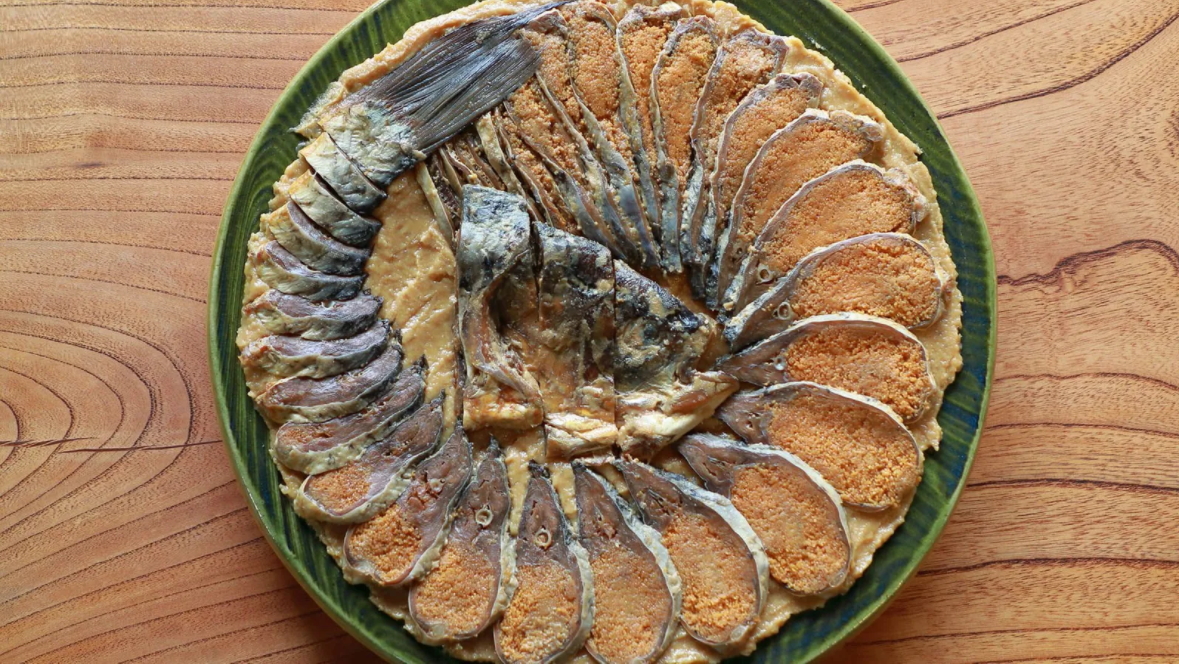
©Tom Schiller via BBC News
Pre-reading questions:
I will read each question. Then, please answer them.
- What is your favorite type of sushi?
- Which place in Japan is famous for sushi?
Vocabulary:
I will read the words, meanings, and sample sentences. Then, repeat after me.
- specialize /SPESH-uh-lahyz/
- preserve /pri-ZURV/
- apparent /uh-PAR-uhnt/
- stench /stench/
- seasoning /SEE-zuh-ning/
[verb] – to offer a particular product or service more than any other, usually so that you have a good reputation for this product or service
Our family specializes in fabric production.
[verb] – to keep something as it is, especially to prevent it from decaying or to protect it from being damaged or destroyed
The organization’s goal is to preserve the country’s natural resources.
[adjective] – visible or understood; obvious
Happiness was apparent on Liam’s face.
[noun] – a strong, unpleasant smell
The stench of burning rubber was unbearable.
[noun] – a substance such as salt, an herb, or a spice that is added to food to improve its flavor
Add the seasonings and soy sauce, then stir in the olive oil gently.
Article reading:
Please read the whole article. Then, I will check your pronunciation and intonation.
Narezushi existed before the sushi we know today. But a unique type of its kind has become Shiga Prefecture’s symbol of narezushi. Known as funazushi, its name comes from the type of fish used: funa (carp), the king of freshwater fish in Japan.
Its prized nigorobuna (crucian carp) is the original type of carp to make funazushi, and its species can only be found in the country’s largest lagoon, Lake Biwa. Today, only five shops around the lake specialize in high-quality funazushi due to nigorobuna’s rarity. Out of all, a shop owned by Kitamura Mariko and her husband Atsushi in Takashima sells the most authentic funazushi. For the past 18 generations, Kitamura has preserved a 400-year-old recipe that includes long fermentation and the changing of rice once during the process. Kitamura says their funazushi tastes like blue cheese with its lacto-fermented, sour, salty, and umami-rich flavor. Some may love it, but others may not because of its apparent stench.
Hayazushi (fast sushi), the modern-day sushi, was created in the Edo period as the “fast-food” version of narezushi. To recreate funazushi’s sour and salty taste, hayazushi uses fermented rice vinegar and soy sauce as seasonings. As funazushi is returning to the market, many chefs across Japan are now aging their sushi for longer durations to give the fish savory richness. Funazushi is definitely a must-try ancient sushi in these modern times.
Its prized nigorobuna (crucian carp) is the original type of carp to make funazushi, and its species can only be found in the country’s largest lagoon, Lake Biwa. Today, only five shops around the lake specialize in high-quality funazushi due to nigorobuna’s rarity. Out of all, a shop owned by Kitamura Mariko and her husband Atsushi in Takashima sells the most authentic funazushi. For the past 18 generations, Kitamura has preserved a 400-year-old recipe that includes long fermentation and the changing of rice once during the process. Kitamura says their funazushi tastes like blue cheese with its lacto-fermented, sour, salty, and umami-rich flavor. Some may love it, but others may not because of its apparent stench.
Hayazushi (fast sushi), the modern-day sushi, was created in the Edo period as the “fast-food” version of narezushi. To recreate funazushi’s sour and salty taste, hayazushi uses fermented rice vinegar and soy sauce as seasonings. As funazushi is returning to the market, many chefs across Japan are now aging their sushi for longer durations to give the fish savory richness. Funazushi is definitely a must-try ancient sushi in these modern times.
Comprehension questions
I will read each question. Then, please answer them based on the article.
- From where is funazushi’s name derived?
- Where can nigorobuna be found?
- Where is Kitamura’s shop located?
- According to Kitamura, what does their funazushi taste like?
- What is hayazushi?
Discussion questions
I will read each question. Then, please answer them.
- Have you heard of or tried narezushi before? Please tell me more about it.
- Which do you prefer, traditional or modern Japanese food?
- Would you try funazushi despite its strong stench? Why or why not?
- Aside from hayazushi, what else do you consider Japanese fast food?
- In your opinion, will funazushi become renowned in other parts of Japan? Please elaborate on your answer.